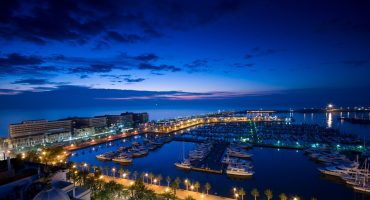Are you looking for your next island getaway? Would you like to enjoy a bit of hiking as well as see natural wonders? Then you should add the Azores, the Portuguese archipelago, to your bucket list. But which Azores island should you visit? Let’s discover what each one has to offer to find out!
The eastern islands
São Miguel, the adventurer’s island
São Miguel is the biggest island in the archipelago. Even though its capital city Ponta Delgada (also the capital of the archipelago) is rather small, it’s every bit as interesting as any other European city, with architecture, shopping, restaurants, charming streets and walks alongside the marina. But the real jewel of São Miguel can be found outside the city limits.
What’s the best thing to do in São Miguel? Well, it’s quite simple: hiking. The volcanic island features luxurious vegetation and plenty of natural wonders. The one spot you absolutely can’t miss is Sete Cidades, a town in the western part of the island. To get there, you can either rent a car or go by public transportation. The 20-kilometre loop gives you spectacular views of two crater lagoons: the Blue Lagoon and the Green Lagoon.
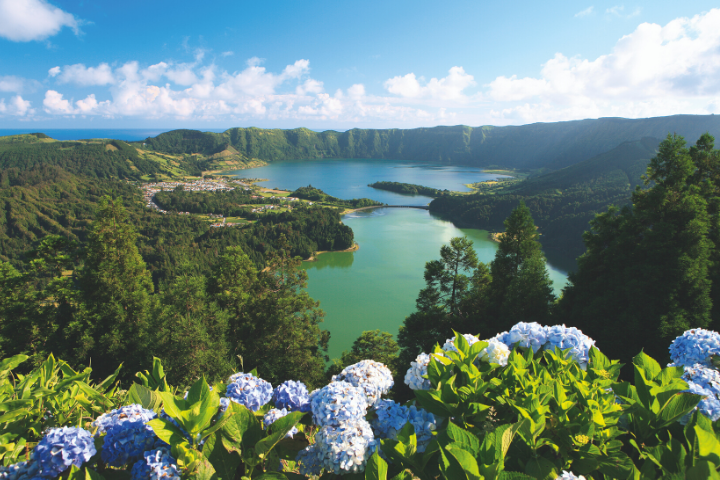
You can also explore a shorter route that goes through Lagoa das Furnas (Lake Furnas). This 9-kilometre walk around the lake is gentle and suitable for all hiking levels. Feeling more adventurous? Why not discover the natural wonders of São Miguel on horseback, or try out one of the mountain bike routes?
Santa Maria, the sunshine island
When you think of an island trip, do you imagine crystal-clear water, plenty of sun, and white sandy beaches? Then you should definitely plan to go to Santa Maria island, where you can enjoy the warmest climate in the Azores.
This makes it the perfect summer destination. The most famous white sand beach is Praia Formosa. There, you can either spend the day sunbathing or enjoying water sports like surfing, windsurfing and sailing. You can also go scuba diving at Santa Maria and the surrounding islets, where you can discover the vibrant sea life and explore underwater caves. It’s an unforgettable experience! We also recommend taking a boat to visit the cave on the Islet of Romeiro.
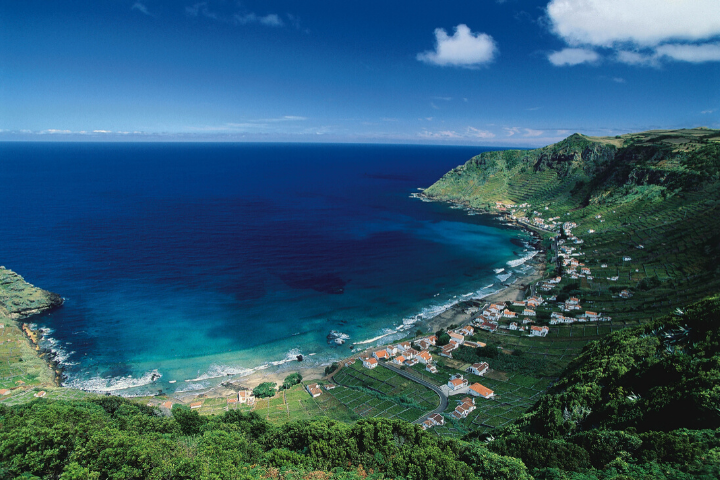
Hikers, there’s also plenty to do for you. Santa Maria has several stunning trails to explore. One great option is to hike up to Pico Alto, the highest point on the island, where you get a fantastic 360º view of Santa Maria.
Central islands
Terceira, the explorer’s island
From the colourful streets of its capital city to a huge extinct volcano, there’s plenty to explore in Terceira. The can’t miss sight on the island is the Algar do Carvão, a natural reserve with a 100-metre deep ancient lava tube.
For experienced hikers, we recommend the Mistérios Negros (Black Mysteries) trail. This 6-kilometre route (classified as difficult) will lead you through a dense forest with fascinating lava rock formations. If you prefer an easier coastal walk, check out the Agualva hiking trail. You’ll be amazed by the lava rock formations that descend into the sea. After a day of hiking, why not enjoy some well-deserved rest at the natural pools in Biscoitos?
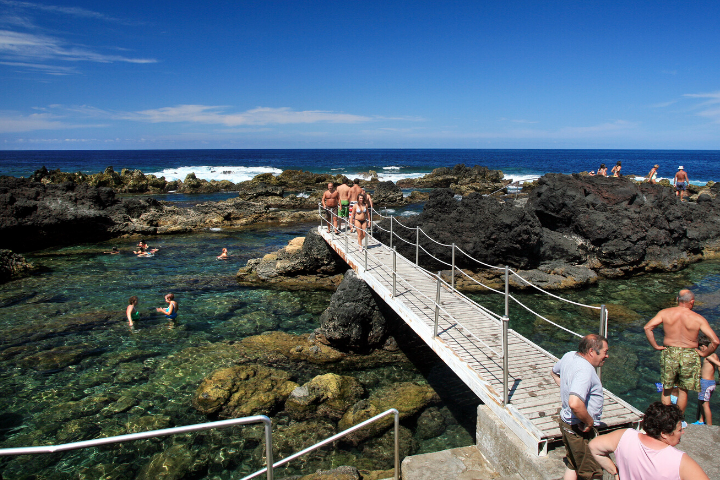
Graciosa, the white island
Graciosa’s most famous landmark is the Caldeira da Graciosa, a gigantic crater located in the southern part of the island. Here, you’ll find the Furna do Enxofre, a volcanic cave that you can’t miss if you’re visiting Graciosa. Thanks to its volcanic rock formations and the presence of many rare plant and animal species, Graciosa has been recognised as a World Biosphere Reserve by UNESCO since 2007.
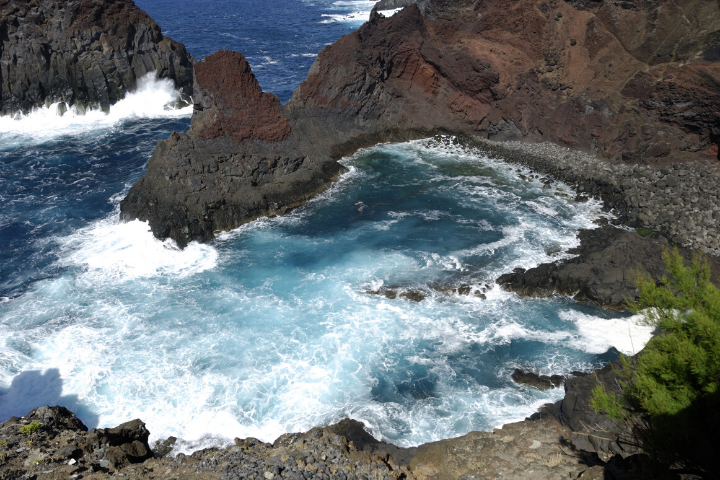
São Jorge, the green island
If you love surfing, São Jorge is the island for you. Everyone from beginners to experienced surfers will enjoy the legendary waves of Fajã da Caldeira de Santo Cristo. Like the other islands in the central part of the Azores, it’s an excellent spot to observe sea animals like dolphins and whales. If you’re lucky, you might even see a blue whale, the world’s largest animal. Your best chance to see them is if you visit the Azores in April or May.
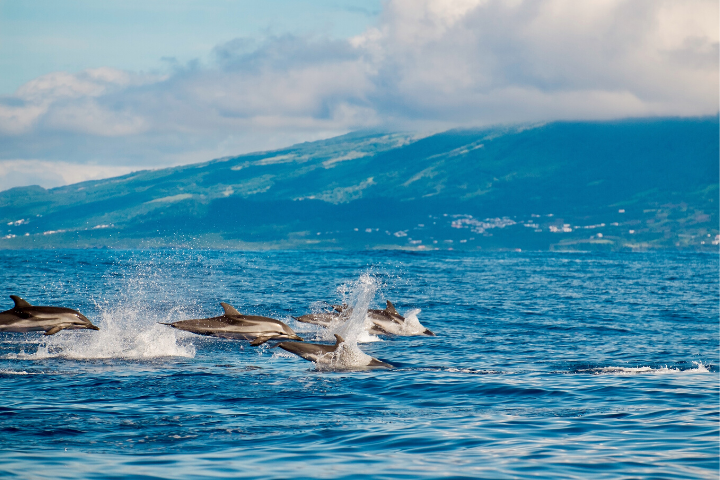
Thanks to its numerous cliffs, São Jorge is also the perfect place for people who love canyoning. You can find routes suitable for all levels on this island.
Pico, the mountain island
On Pico Island, you can find the highest point in all of Portugal: Ponta de Pico mountain. This volcanic cone towers 2,351 metres above sea level. If you can climb up to the top, you’ll be able to get a great view of the nearest islands, Faial and São Jorge. If the weather is good, you may even spot Graciosa and Terceira.
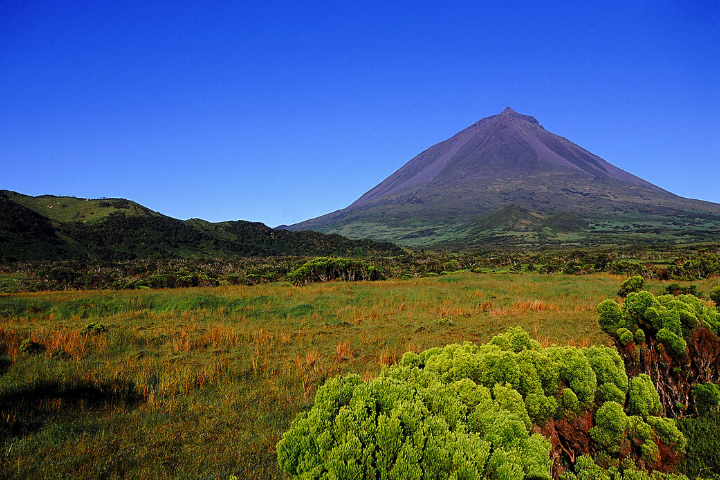
On Pico Island, you can also explore lava formations, both underground (like the Gruta das Torres) and underwater. If you go diving on the island, not only can you explore tunnels and archways formed from ancient lava, but you’ll also be able to see several species of fish, like barracudas and parrotfish.
After your adventures, take the time to taste the delicious local wines! Planted on black lava grounds, the Pico Island Vineyard Culture is classified as a UNESCO World Heritage site.
Faial, the blue island
Faial’s nickname doesn’t come from the clear blue water that surrounds it, but rather from the flowers you can see everywhere: the blue hydrangeas. Summer is the best season to go to Faial to see the beautiful flowers in full bloom. As the hydrangeas are a regional symbol, picking them is strictly forbidden.

Western islands
The Azores’ western islands are the westernmost point in all of Europe. The two islands are quite small but packed full of natural wonders.
Flores, the water island
Flores is called “the water island” because of the many waterfalls and lakes you can admire there. One of the most amazing spots on the island is easily reachable by a 1-hour walk (there and back): Poço da Ribeira do Ferreiro. There, dozens of waterfalls cascade into a lagoon – a true natural wonder.
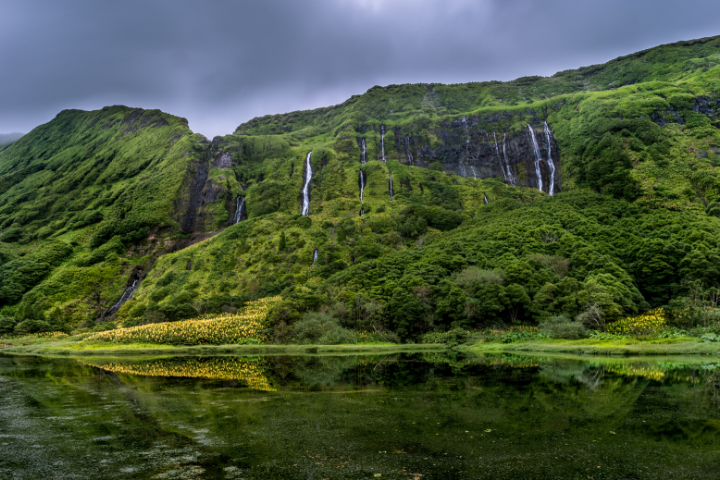
Considered the most famous natural landmark in the Azores, the Rocha dos Bordões (Bordões Rock) is unmissable. The rocks naturally formed into columns that are covered by plant life. It’s something you can’t see anywhere else.
The Great Route of Flores is a 47-kilometre trail that winds along the coastline. As it’s classified as a difficult trail, it’s recommended only for experienced hikers. You’ll follow the coastline from Santa Cruz to Lajedo. Along the way, you’ll see the island’s volcanic landmarks as well as some amazing coastal landscapes including Fajã Grande, a geological platform created from ancient lava flows.
Corvo, the smallest island
Approximately 18 kilometres away from Flores, Corvo is the smallest island in the Azores and has less than 500 inhabitants. What truly sets this island apart is the complete silence here. If you need to completely get away from it all and get in touch with nature, this is the spot for you in the Azores. You’ll also find a strong sense of community among the residents of this peaceful island. Visiting is a completely unique experience.
One of the main landmarks on Corvo is the Caldeirão crater. To enjoy the view from the top of this 3.5-kilometre wide crater, you can follow the circular trail around the rim (approximately 2.5 hours).
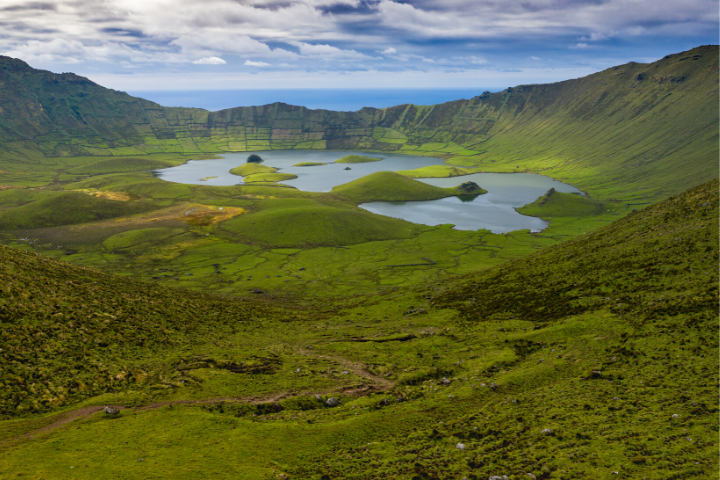
Bird lovers will also enjoy observing the 400 bird species you can find on Corvo. October is the perfect month to see most of these birds. You can also find amazing diving spots around the island, like Gamela, where you’ll see lots of different wildlife species.
Visiting the Azores: practical information
How to get to the Azores
Flights from London have a layover in Lisbon before continuing to the islands. There are 3 main airports in the Azores you can fly to:
- Ponta Delgada (São Miguel)
- Terceira
- Horta (Faial)
To travel between the islands, there are local flights and boat trips that run daily in the high season.
When is the best time to go to the Azores?
To enjoy good weather, the best time to go to the Azores is from May to October. You’ll also want to take into account what you want to see when picking your dates. For instance, if you really want to see whales, the best time to visit is May.
For more information about the Azores Islands check Visitportugal.com or the Regional Tourism Board website.



